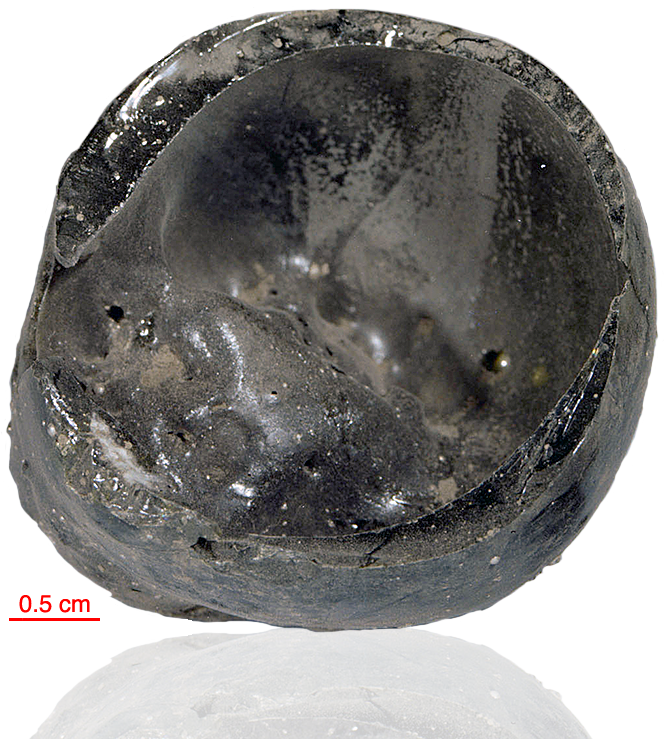
Fact sheet
65016 is a hollow, broken sphere or glass bubble. It is about 3–4 cm in size. The glass surface is smooth and without zap pits. The glass has a green colour and is notable for its flow structures and prominent vesicles. 65016 is all glass except where some microlites/crystallites are growing adjacent to nucleation centres around included feldspar. The crystallites are shown in rotations 1 and 2. A remarkable sample.
The sample weighed 21 grams before analysis and has not been dated.
Further details of this and other Apollo samples are here: http://curator.jsc.nasa.gov/lunar/
Our section is slightly thick.
The Apollo 16 landing site was in the hilly region around Descartes crater in the lunar highlands. The landing spot was chosen to allow the astronauts to gather geologically older lunar material (Descartes Formation and the Cayley Formation) than the samples obtained in the first four landings, which were in or near lunar maria.
The mission lasted 11.1 days, with a stay on the lunar surface of 71 hours. The crew were on the lunar surface for 20.2 hours during which they traversed approximately 27 kilometers and collected approximately 96 kilograms of samples.
Apollo 16 was launched on 16 April 1972.






